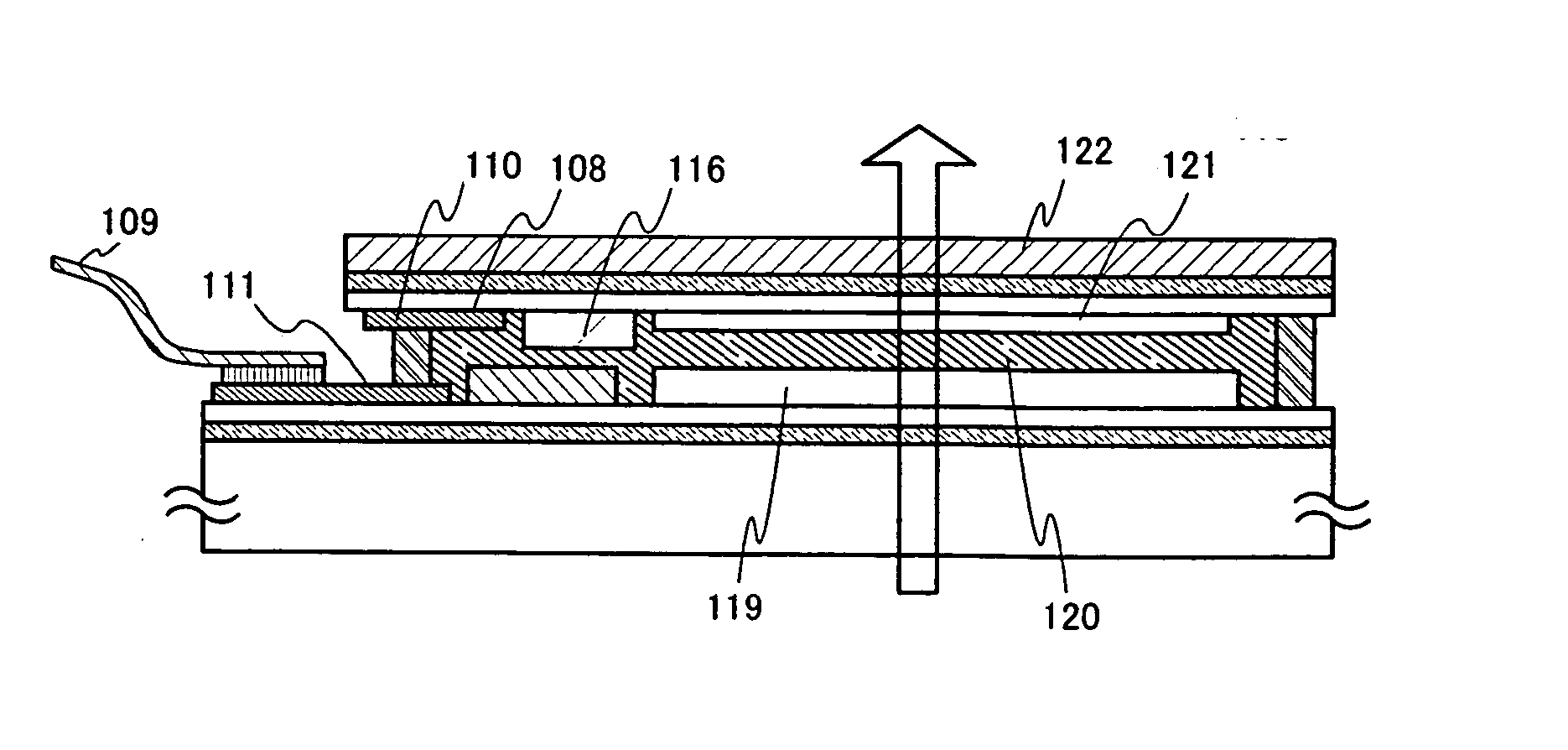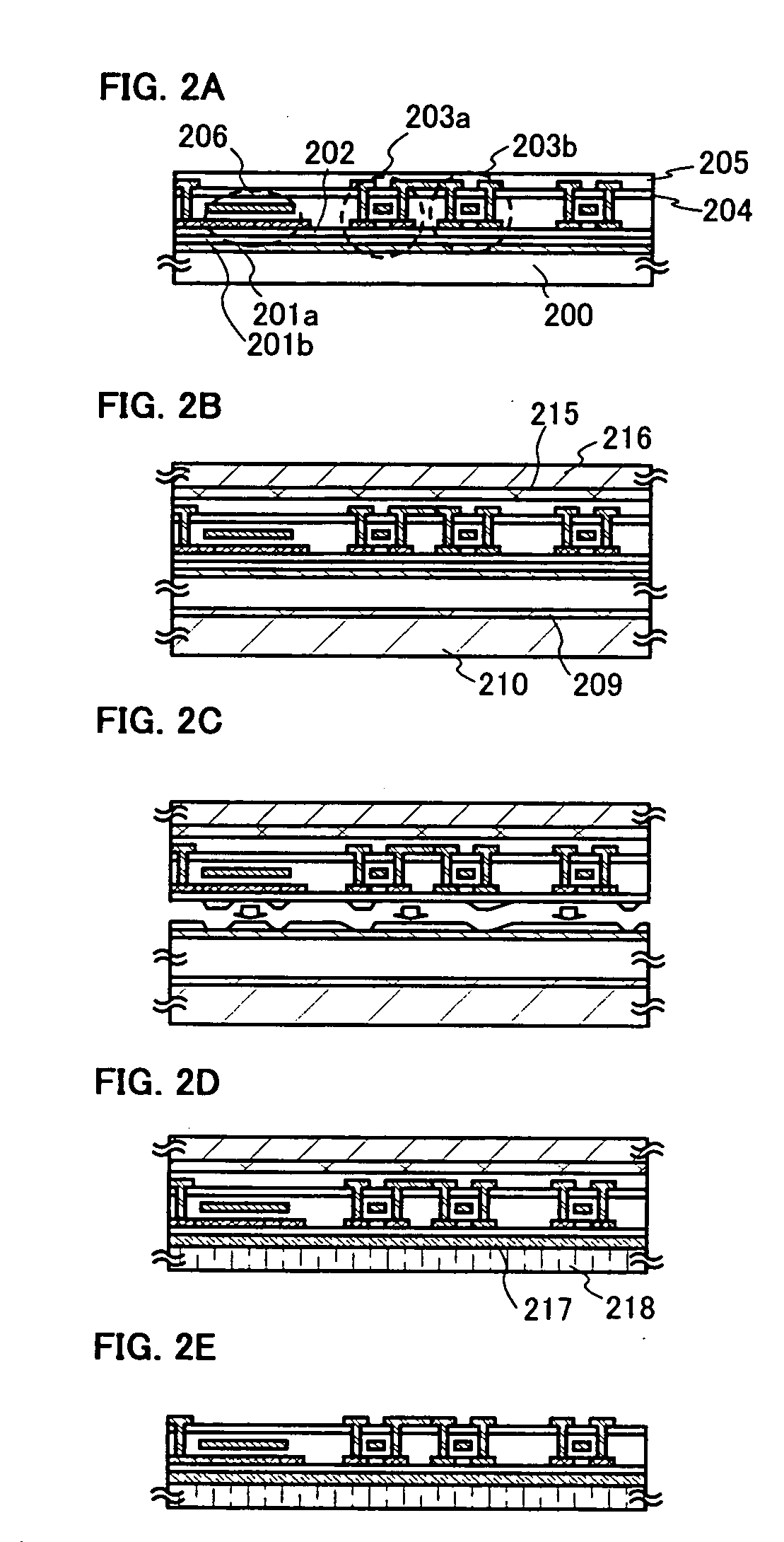Semiconductor device and method for manufacturing the same
a technology of semiconductors and semiconductors, applied in the field of semiconductor devices, can solve the problems of inconvenient mass production of substrates, inconvenient use of substrates, and inability to meet the needs of mass production,
- Summary
- Abstract
- Description
- Claims
- Application Information
AI Technical Summary
Benefits of technology
Problems solved by technology
Method used
Image
Examples
embodiment 1
[0109] This embodiment shows an example of manufacturing an assembly of separated layers by the plurality of separated layers obtained by a separation technique and a transfer technique.
[0110] Here, a separation method using a metal film and a silicon oxide film is adopted.
[0111] An element is formed over a glass substrate (a first substrate 200). In this embodiment, AN100 is used as the glass substrate. A metal film 201a is formed, here, a tungsten film is formed as the metal film 201a to have a thickness of from 10 nm to 200 nm, preferably, from 50 nm to 75 nm by sputtering over the glass substrate. Further, an oxide film 202, a silicon oxide film in this instance, is laminated to have a thickness of from 150 nm to 200 nm without being exposed to the air. The oxide film 202 is preferably twice as thick as the metal film or more. It should be noted that a 2-nm to 5-nm-thick metal oxide film (a tungsten oxide film) in amorphous state is formed between the metal film 201a and the sil...
embodiment 2
[0179] This embodiment shows an example of manufacturing a light emitting device (having a top emission structure) provided with a light emitting element that has a layer containing an organic compound as a light emitting layer, over a glass substrate.
[0180] Compared to a bottom emission structure, the top emission structure requires few material layers through which light generated in the layer containing the organic compound pass, thereby reducing stray light between material layers having different reflective index.
[0181] The pixel portion is made up of a plurality of pixels each of which comprises a switching TFT, a current control TFT and a first electrode (anode) which is electrically connected to a drain of the current control TFT. The current control TFT may either be an n-channel TFT or a p-channel TFT, but when it is to be connected to the anode, it is preferably be a p-channel TFT. The TFTs can be manufactured with reference to Embodiment 1. As in Embodiment 1, before the...
embodiment 3
[0191] This embodiment shows an example of a liquid crystal display device hereinafter.
[0192] According to Embodiment 1, a layer to be separated including a pixel TFT is formed over a laminate of a tungsten film, a tungsten oxide film, and a silicon oxide film over a glass substrate. A driver circuit may be formed in the same step. An n-channel TFT is used as the pixel TFT, and a transparent conductive film is used as a pixel electrode. The pixel TFT may be formed by a known method.
[0193] In addition, column spacers containing an inorganic material may be provided at a regular interval to keep the thickness of a liquid crystal layer.
[0194] Subsequently, as in Embodiment 1, the layer to be separated including the pixel TFT is separated from the glass substrate and transferred to a plastic substrate. Thus, an active matrix plastic substrate is manufactured.
[0195] According to Embodiment 1, a layer to be separated including a CPU is formed over a laminate of a tungsten film, a tungsten...
PUM
 Login to View More
Login to View More Abstract
Description
Claims
Application Information
 Login to View More
Login to View More - R&D
- Intellectual Property
- Life Sciences
- Materials
- Tech Scout
- Unparalleled Data Quality
- Higher Quality Content
- 60% Fewer Hallucinations
Browse by: Latest US Patents, China's latest patents, Technical Efficacy Thesaurus, Application Domain, Technology Topic, Popular Technical Reports.
© 2025 PatSnap. All rights reserved.Legal|Privacy policy|Modern Slavery Act Transparency Statement|Sitemap|About US| Contact US: help@patsnap.com



